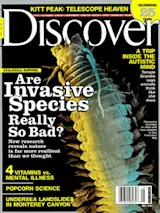Pecos Road runs due west along the southern boundary of Phoenix. On the city side of the road, new subdivisions of retirement homes are pushing up their tile roofs like mushrooms that sprout with no rain. On the other side of the road lies the flat scrub of the Gila River Indian Community, some 600 square miles, most of it empty. The reservation shimmers out of the reach of the builders like a desert mirage.
This land was no good to anyone in 1859, when it was allocated to the Pima Indians. Today it has 13,000 Native American residents, living in squat cinder-block houses in scattered, dusty hamlets; three casinos that have boosted the tribal income to $100 million annually from $4 million; irrigated cotton, alfalfa, and citrus, for Pimas were always farmers; and a hospital and two kidney-dialysis clinics, with another medical clinic in the planning stage. Kidney failure ...














